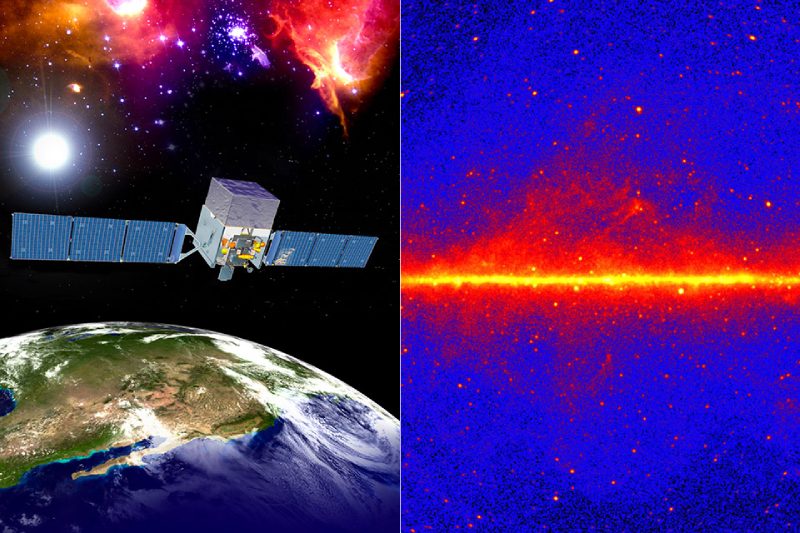An all-sky time-lapse film created from 14 years of data collected by NASA’s Fermi Gamma-ray Space Telescope brings the universe to life.
The images were created by Seth Digel, a senior staff scientist at SLAC National Accelerator Laboratory in Menlo Park, California. “The bright, steady gamma-ray glow of the Milky Way is punctuated by intense, days-long flares of near-light-speed jets powered by supermassive black holes in the cores of distant galaxies,” Digel said. “These dramatic eruptions, which can appear anywhere in the sky, occurred millions to billions of years ago, and their light is just reaching Fermi as we watch.”
The highest-energy type of light is called a gamma ray. The intensity of gamma rays with energy more than 200 million electron volts that Fermi’s Large Area Telescope (LAT) detected between August 2008 and August 2022 is depicted in the film. In contrast, the energy of visible light range from two to three electron volts. The locations of more strong gamma-ray sources are indicated by brighter hues.
“One of the first things to strike your eye in the movie is a source that steadily arcs across the screen. That’s our Sun, whose apparent movement reflects Earth’s yearly orbital motion around it,”remarked Judy Racusin, a Fermi Deputy Project Scientist who leads a tour of the film at NASA’s Goddard Space Flight Center in Greenbelt, Maryland.
Due to the impact of accelerated particles known as cosmic rays, which are atomic nuclei flying very close to the speed of light, the LAT often detects the Sun in a feeble way. Gamma rays are produced when they hit the gas in the Sun or even the light it produces. But occasionally, the Sun experiences tremendous eruptions known as solar flares that cause it to abruptly become one of the brightest gamma-ray sources in the sky for a brief period of time.
Two perspectives of the sky are shown in the film. The core of our galaxy is seen in the center of the rectangular image, which displays the entire sky. This accentuates the Milky Way’s central plane, which radiates gamma rays that are created when cosmic rays collide with interstellar gas and stars. Numerous additional objects, like as neutron stars and supernova leftovers, are also scattered across it. We can see bright, fast shifting sources scattered throughout the larger cosmos above and below this center band, which is our galaxy.
As the majority of these are actually far-off galaxies, it is best to observe them in an alternative perspective that centers on the north and south poles of our galaxy. These galaxies, known as blazars, are all home to a central black hole that is at least one million times the mass of the Sun.
Blazars are observed gazing nearly directly down one of the matter jets that are produced by black holes, which for some reason accelerates the jets’ speed and increases their brightness and variability.“The variations tell us that something about these jets has changed,” Racusin said. “We routinely watch these sources and alert other telescopes, in space and on the ground, when something interesting is going on. We have to be quick to catch these flares before they fade away, and the more observations we can collect, the better we’ll be able to understand these events.”
As a vital component of the expanding network of missions collaborating to record these changes in the universe as they occur, Fermi plays a significant role.
A large number of these galaxies are really distant. For instance, the light from the blazar 4C +21.35 has been reaching us for 4.6 billion years, indicating that the current flare-up actually happened during the early stages of the formation of our Sun and solar system. More than twice as far away, other luminous blazars together offer remarkable images of black hole action across cosmic time.
Many of the short-duration events that Fermi studies—such as gamma-ray bursts, the strongest cosmic explosions—are not visible in the time-lapse. This is the outcome of sharpening the photographs over several days by processing data.
Goddard oversees a collaboration between particle physics and astrophysics called the Fermi Gamma-ray Space Telescope. Along with significant assistance from academic institutions and collaborators in France, Germany, Italy, Japan, Sweden, and the United States, Fermi was built in partnership with the U.S. Department of Energy.





